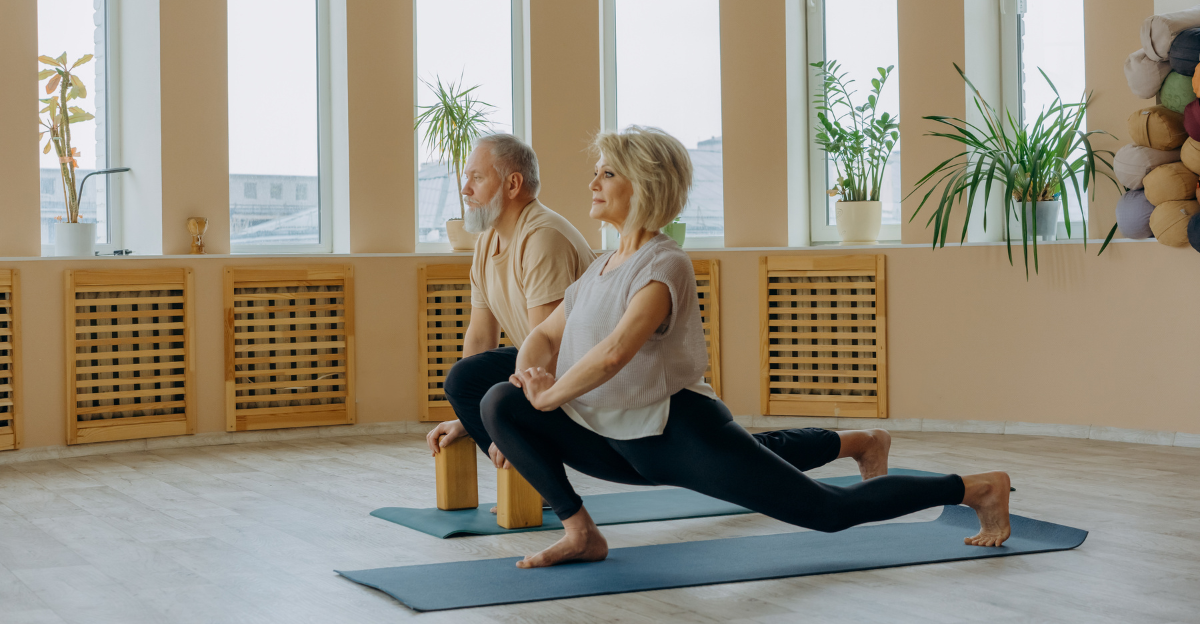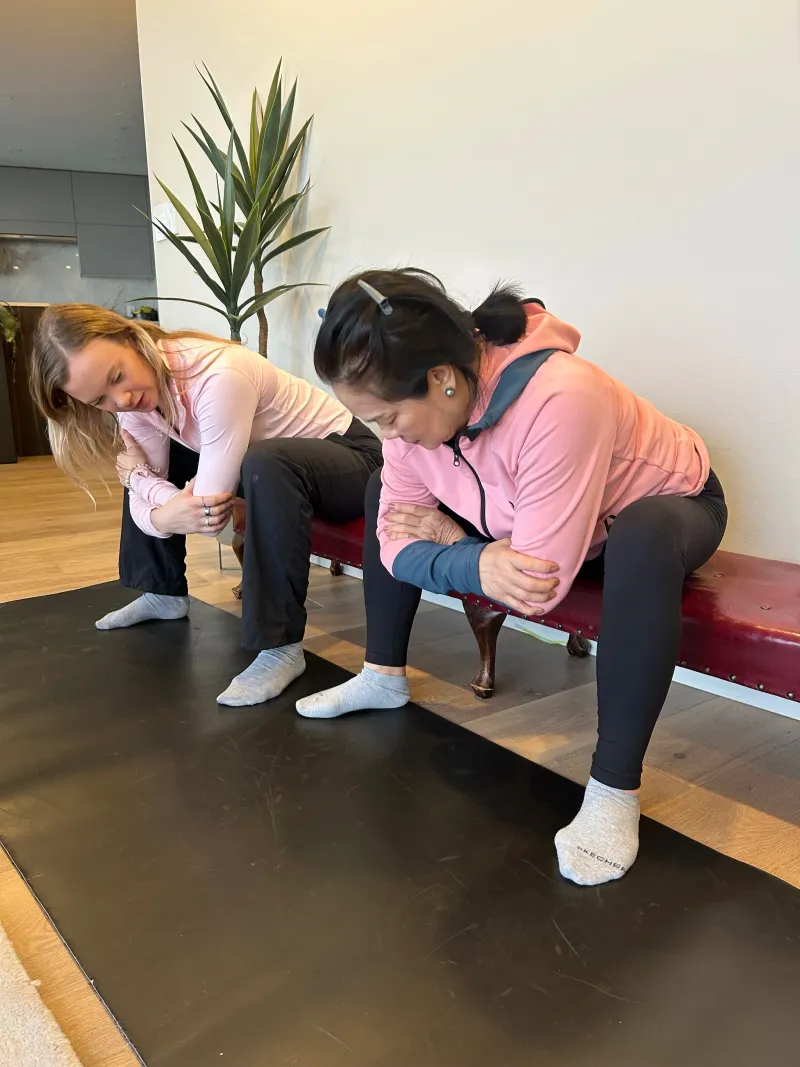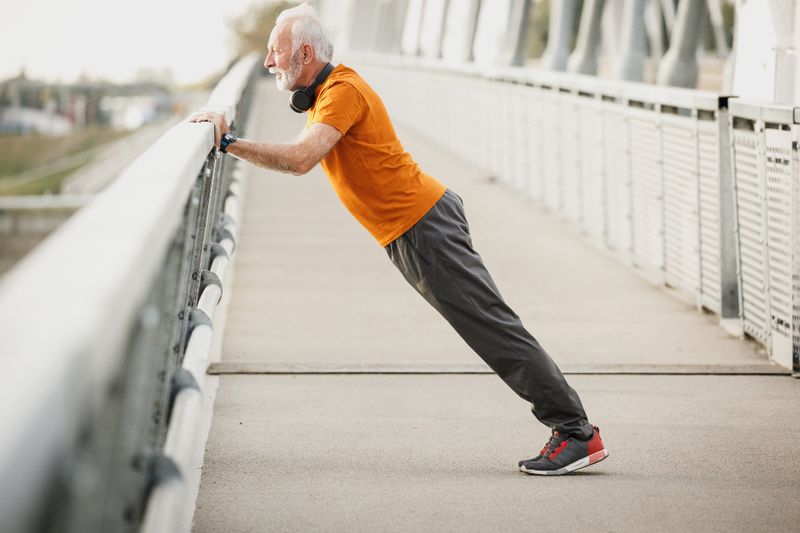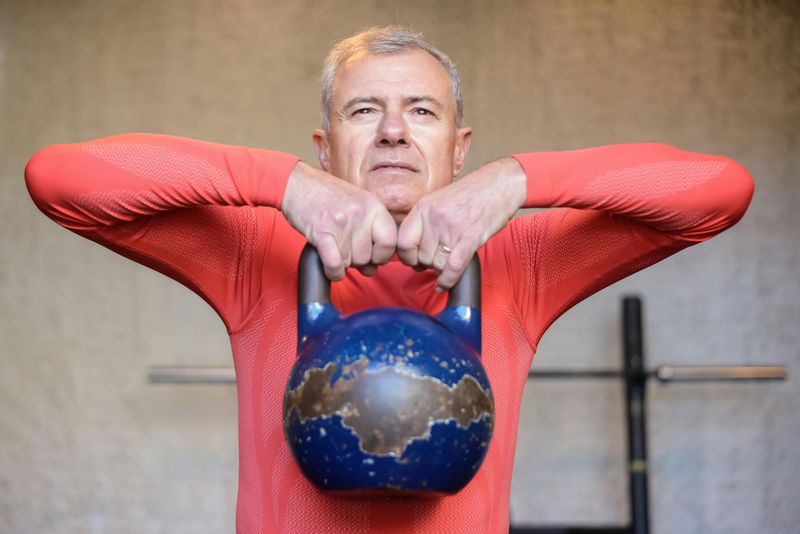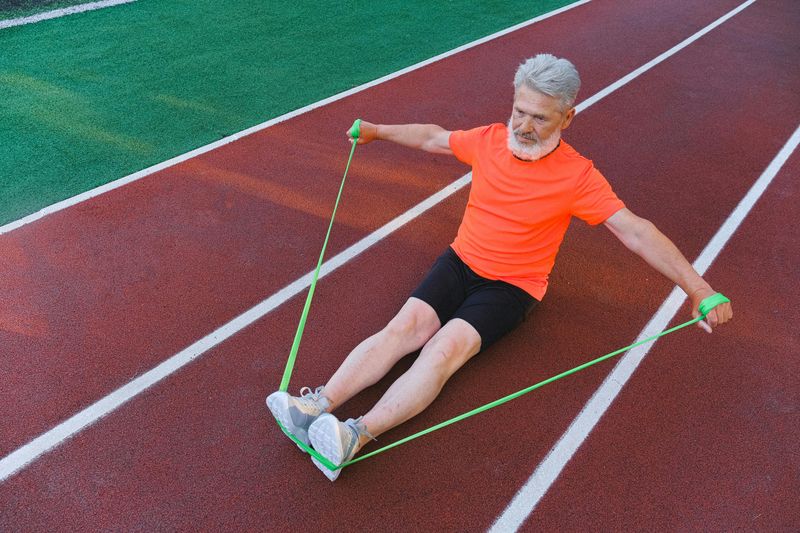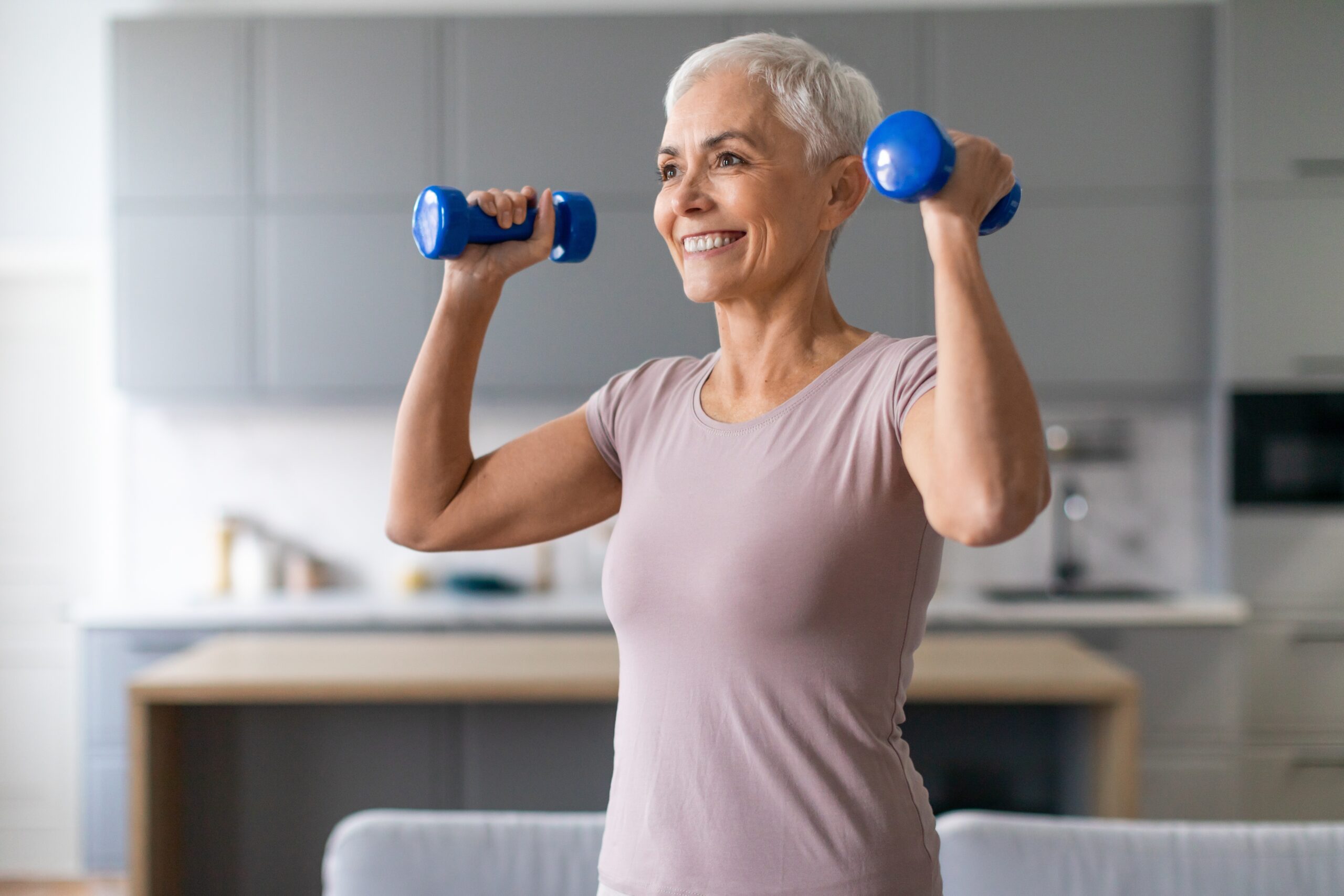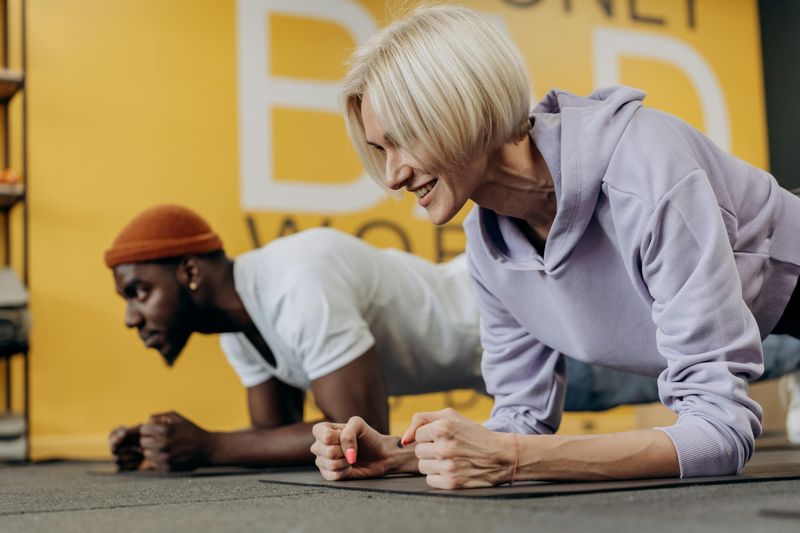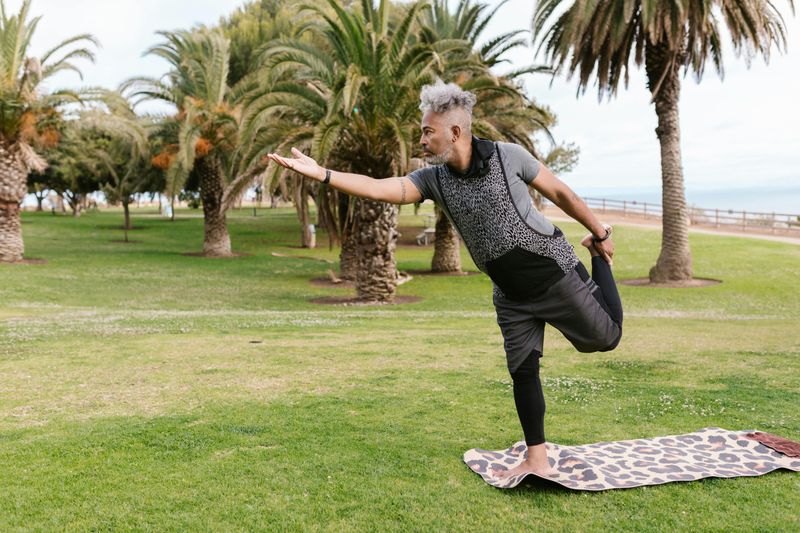Staying active becomes even more important as we age. Regular exercise helps maintain muscle strength, improves balance, and keeps joints flexible. For adults in their golden years, the right exercises can make daily activities easier while reducing the risk of falls and injuries. These seven powerful movements form the foundation of a complete fitness routine that anyone can adapt to their own abilities.
1. Chair Squats for Powerful Legs
Strong legs help with everyday movements like standing up from a chair or climbing stairs. Chair squats build these essential muscles without putting too much strain on your knees.
Begin by sitting at the edge of a sturdy chair with feet hip-width apart. Lean slightly forward from your hips and stand up slowly, using your leg muscles rather than pushing with your hands. Once standing tall, bend your knees to lower yourself back to just hovering above the seat before standing again.
Start with 5-8 repetitions and gradually work up to 10-15. If balance is a concern, keep the chair against a wall for stability.
2. Modified Push-Ups for Upper Body Strength
Wall push-ups offer the benefits of traditional push-ups without getting down on the floor. This exercise strengthens chest, shoulders, and arms—muscles that help with lifting, carrying groceries, and maintaining independence.
Stand facing a wall at arm’s length. Place your palms flat against the wall at shoulder height and width. Bend your elbows to bring your chest toward the wall while keeping your body straight from head to heels.
Push back to the starting position. For more challenge, try incline push-ups using a kitchen counter or sturdy table, or progress to knee push-ups on the floor.
3. Kettlebell Deadlifts for Back Health
Picking things up from the floor becomes risky without proper technique. Deadlifts train your body to lift correctly using your legs instead of your back, potentially preventing painful injuries.
Stand with feet shoulder-width apart and a light kettlebell or dumbbell on the floor between your feet. Bend your knees while keeping your back straight, reach down and grab the weight with both hands.
Push through your heels to stand up straight, keeping the weight close to your body. Lower the weight back down with the same straight-back form. Even practicing with no weight helps reinforce proper lifting mechanics.
4. Seated Resistance Band Rows for Better Posture
Spending years sitting and looking down at screens can cause the shoulders to round forward. Seated rowing exercises help reverse this by strengthening the upper back muscles that pull the shoulders into proper alignment.
Sit on the ground with your legs extended straight in front of you. Loop a resistance band securely around the soles of your feet and hold one end in each hand. Keeping your chest tall, pull the band outward and slightly back by squeezing your shoulder blades together.
Focus on keeping your arms controlled and your elbows moving in line with your torso. Slowly return to the starting position before repeating. This movement mimics rowing and is excellent for improving posture.
5. Overhead Press for Shoulder Mobility
Reaching for items in high cupboards requires good shoulder mobility and strength. The overhead press directly targets these muscles and helps maintain range of motion in your shoulder joints.
Sit or stand holding light dumbbells at shoulder height with palms facing forward. Press the weights upward until your arms are extended overhead, but not locked. Slowly lower the weights back to shoulder level.
No weights? Filled water bottles work perfectly. For those with shoulder issues, resistance bands anchored under your feet provide a gentler alternative while still building strength in these important mobility muscles.
6. Modified Planks for Core Stability
A strong core provides the foundation for nearly all movement and helps protect your spine. Modified planks build core strength while accommodating different fitness levels.
Begin with a wall plank by standing arm’s length from a wall, placing forearms against it, and holding this position. For more challenge, try a countertop plank with forearms on a kitchen counter and body straight from head to heels.
Advanced practitioners might try floor planks from the knees. Hold any variation for 10-30 seconds, focusing on keeping your abdominal muscles engaged and your back flat. Remember to breathe normally throughout.
7. Single-Leg Balance for Fall Prevention
Balance naturally declines with age, but regular practice can dramatically improve stability and prevent dangerous falls. Single-leg balance exercises require no equipment yet offer tremendous benefits.
Stand near a counter or sturdy chair for support if needed. Shift your weight to one foot and slightly lift the other foot off the floor. Hold this position for 10-30 seconds before switching legs.
For extra challenge, try closing your eyes or adding small movements with the raised leg. Practice daily for best results—even 30 seconds while brushing teeth or waiting for coffee to brew adds up to significant improvement over time.
